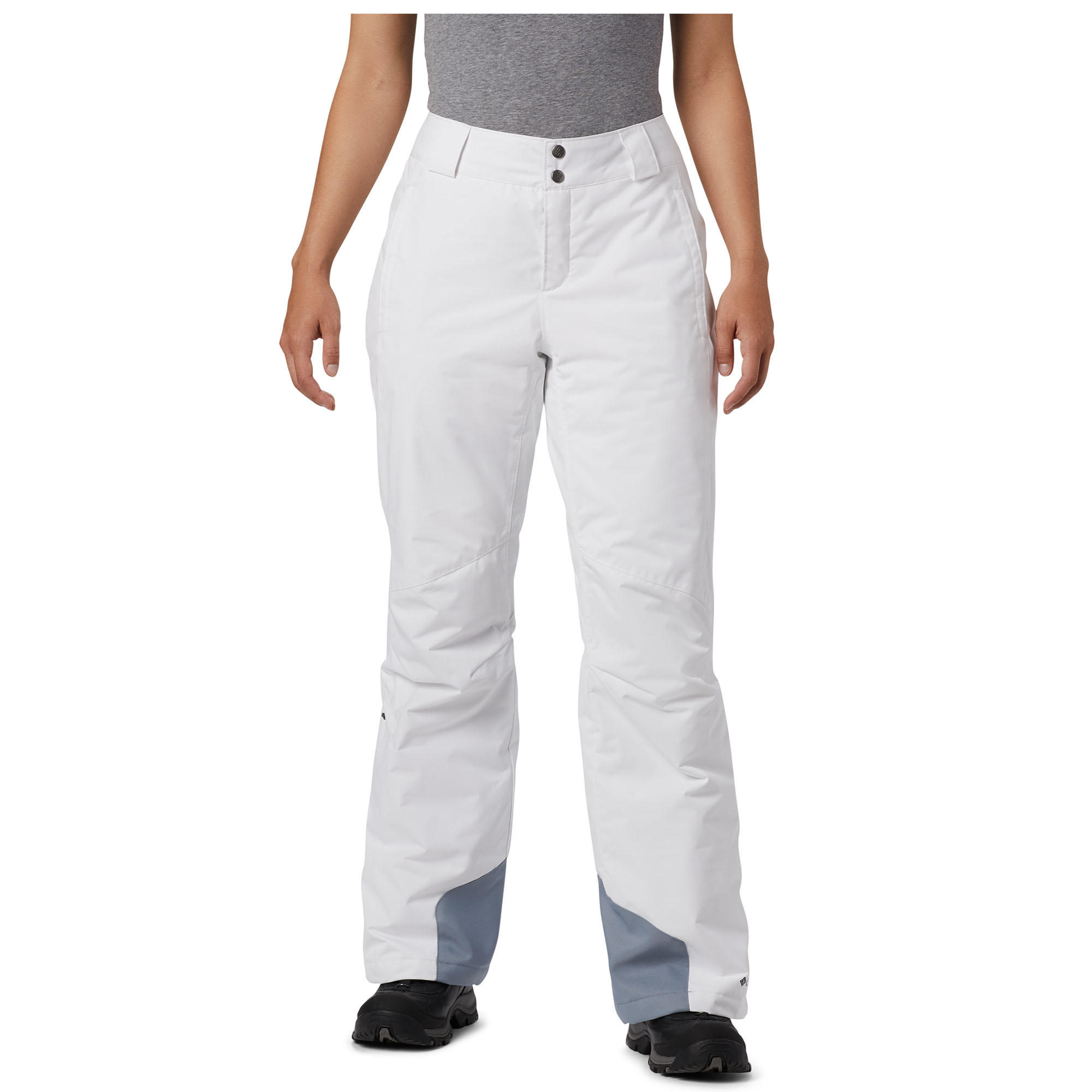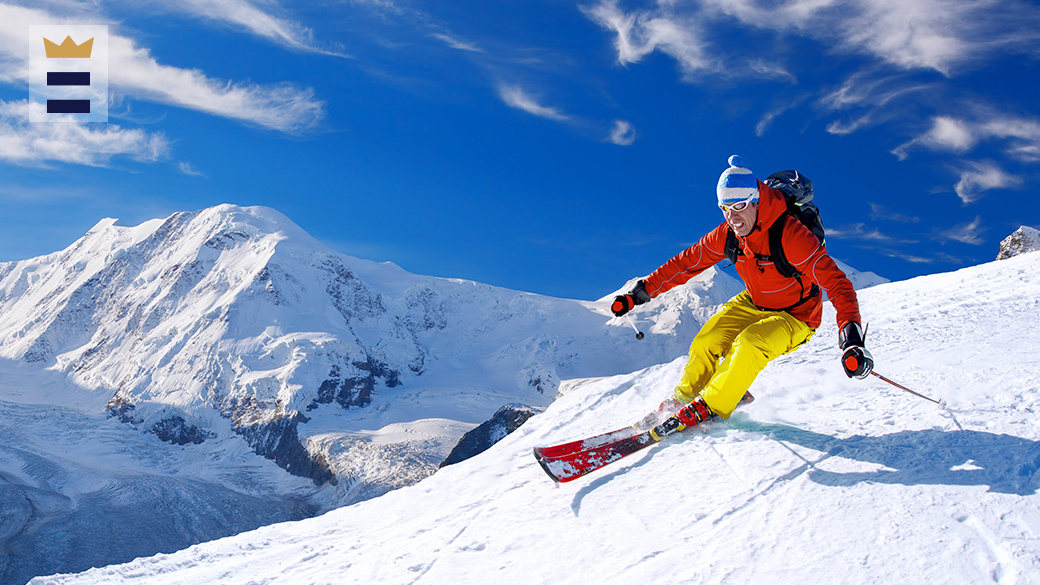
Consider a number of factors when shopping for backcountry ski pants. These include fit and ventilation, insulation, weatherproofing, and insulation. What features you need in your pants depends on the type of ski that you have.
Best Fitted Pants:
It is important that you choose a pair of backcountry ski trousers that fits comfortably and snugly. These will prevent cold air from getting to your body and allow for you to ski more freely. To ensure the perfect fit, you will need a pair that can adjust to fit your waist.
Best Downhill Ski Pants
Ski pants with high-quality stretchy construction are essential for downhill skiing. These will let your skis move freely over the snow, and you can take them off easily when you are tired.
Although most downhill ski trousers are waterproof, some pants have breathability. These will make them more comfortable for warm days and let you wear a base layer which can wick away moisture.

Those that are made with GORE-TEX Shell Fabric:
GORE-TEX is the shell fabric for pants that offer maximum weatherproofing. While they may be more expensive than others, these pants provide superior weatherproofing under all circumstances.
These are the most popular option for serious downhill and backcountry skiers. However they can be heavy and restrictive. Three-layer ski and snowboard pants are best. These have a waterproof shell, breathable membrane and an interior liner. Although these are usually more expensive than 2-layer pants, they offer greater protection and provide a more natural feel.
Most people don’t want to wear a layer of base clothing on a ski trip when it’s warm out. Therefore, these will be the most sought-after choice for skiers who want lightweight, versatile pants that can handle all conditions.
A good base layer should help to wick moisture away from your skin and onto the outer skin of your clothing. This will prevent sweaty chafing and keep your skin dry. This is particularly important when skiing in the sun or on warm days.
Insulated:
The insulation with synthetic or down will trap heat, keeping your body warm in cold conditions. A base layer that is wicking will help to dry your skin and control moisture. However, it's better to have an insulated layer than one that is more light.

These insulated pants can be worn in colder weather, so pair them with an extra layer of warmth and a base-layer to ensure comfort when skiing in very cold or hot conditions.
The Best Ski Mountaineering Pants
These are the pants we'd recommend for any seasoned ski mountaineer. They have been tear-resistant when climbing rocky summits of Chamonix, France. And they were well-prepared to resist moisture during a spring storm in Washington's Crystal Mountain. A D-ring transceiver attachment is included and reinforced bottom seams are added for extra utility when skiing off the beaten track.
FAQ
How can I make traveling more enjoyable?
Traveling shouldn't be just about getting to one destination from another. You should include all the experiences you have along the way.
So we have created an app called "Traveler," which helps you plan your trip by creating itineraries based on your interests.
We are currently working to add more features, such as booking flights, hotels, and renting cars.
The goal of this project was to create an easy travel planning tool for those who want to explore more while they're on the road.
What should I do with my luggage?
There are many options. You can use lockers at airports as the most common option. These are typically located near the security zone. They can be purchased for between $5-10 per daily, depending upon the size of the locker.
Renting a storage unit is another option. They are usually located outside of large shopping malls or hotels. While prices can vary, there are some places that offer discounts for multiple units being rented together.
A third option is to hire a porter. A porter will help carry your luggage from the carousel to your room. You pay a small fee each time he helps you.
How do you travel light?
There are no right or wrong answers when packing for a vacation. These are some suggestions to help you pick the right items to take on your trip.
-
Only bring what you need.
-
Only bring what you plan to actually wear.
-
Do not overpackage yourself with items.
-
You should ensure that you have enough space in your luggage.
-
You should always double-check that everything is packed.
-
Take advantage of free storage facilities.
-
Reusable water bottles are better than bottled water.
-
You can carry a backpack rather than a suitcase.
-
Take public transport if possible and instead walk or bike.
-
You can choose the right size bag.
-
Avoid carrying heavy objects.
-
Be ready for anything.
-
Do not leave anything behind
When traveling, what should you remember?
When you travel, you'll find yourself in situations with little time to make decisions. So be prepared to improvise.
Sometimes you might find yourself stuck for days, weeks or months. You can plan ahead to ensure you have water, food, shelter, and somewhere to sleep. However, if you don’t plan ahead, you might need to improvise.
In these instances, you may need to rely only on what you are good at. That means making quick decisions based on instinct and experience.
But sometimes, you won't have any choice. There are many situations where you might be left without cell or gas service, or even robbed. In these cases, you will have to adapt quickly and respond to any situation.
The key to success is to stay calm, remain focused and act decisively. Don't panic. Instead, focus on what you can control.
For example, if you're lost in the woods, you can choose which direction to go. For those who are hungry, berries and mushrooms can be eaten. Rainwater can be drank or snowmelt.
Rest if your tired. You can wrap up if you're cold. If you're wet, you can change clothes. No matter what you do, it will make you feel better to stay positive.
What should you do first when you arrive at your destination?
Always have a plan in place for when your arrive at a new location. It lets you know what's expected and where to go.
To avoid missing anything, you need to plan ahead.
For example, if you plan on visiting a city for more then one day, make sure you research which parks, museums, and landmarks are available.
It might be worth looking into getting a map for the area or reading about the history of this region.
What documents should you keep with me when I travel?
To make it easy to find important documents on the road, keep copies at home. Keep a backup of your passport and driver's licence, as well as any credit card information, if you intend to use an ATM.
A photocopy is always a good idea. This can be used to verify your identity, if necessary.
Make sure to keep a copy of your itinerary and any reservations. These will help with your planning and remembering where you are.
As well as this, you should keep a copy of your flight ticket and hotel reservation details. If you have any problems, you can always contact someone back at home.
Also, don't leave valuables unattended. Your valuables will be safe if you keep them in a money belt, or inside your luggage.
Check your bag before you go to prevent losing expensive items.
Remember that it is always safer to be simple than to plan everything.
Enjoy the ride and just relax.
Statistics
- According to Maori legends, this park holds 14 fjords that were all carved by a giant stonemason with an adze. (busytourist.com)
- That's an 18% jump from 2019, the previous record year. (travelandleisure.com)
- You can use compression sacs or cubes to reduce the volume of your clothes by up to 80%—this is especially convenient for bulky items such as sweaters and jackets. (eaglecreek.com)
- No Checked Bags: No Alcoholic beverages with more than 70% alcohol (over 140 proof), including grain alcohol and 151 proof rum. (tsa.gov)
- They're also likely to offer babysitting services, in case you'd like to have dinner one night after 7 p.m. (travelandleisure.com)
External Links
How To
How to plan for your next vacation
Planning a trip requires many things, such as booking flights and hotels, car rentals, activities, and so on. It involves important considerations like your budget, destination choice, weather forecast, etc.
These points are essential to keep in mind when you plan your next vacation.
We have created a step to guide that will help you plan your next trip. This guide has been compiled using customer feedback as well as our own experience. This guide will help you plan your next vacation easily.
Steps:
-
Plan your Budget - Planning your budget is one of the most important steps in preparing for a trip. Before you can start planning where and what you will do, you must first know how much you are willing to spend. If you don't have the money, your plans may be cancelled.
-
Book Your Tickets - Once you've decided on your budget and set your priorities, booking your flight tickets is the first thing that you should do. You should ensure that you get the best deal possible at the lowest price. Make sure to check for special offers during peak seasons. These deals can save you lots of money.
-
You can choose your destination - Once you have purchased your ticket, you need to decide where you would like to go. Multiple factors play into the decision of where to go, climate (when you can visit), culture (how friendly they are) and cost (how expensive it is).
-
Finding Accommodations - Once you have chosen your destination, it is time to find accommodations. Various accommodation options are available, ranging from cheap hostels to luxury suites. Choosing the right type of accommodation depends on your needs and preferences. If you're looking for an area close to downtown, a hotel may not be the right choice. You may prefer quieter areas away from the crowds and a homestay could be better suited for your needs.
-
Select Activities & Attractions: Now that you have selected your accommodation, it is time to decide which activities and attractions to include in the itinerary. Depending on the length of your stay, you can either choose only a few activities or add several new ones throughout your trip.
-
You can now determine your schedule. It is important to stick to a schedule in order for maximum enjoyment of your trip. However, if you're free to move around at your convenience, you can enjoy your trip even more.
-
Create itinerary – This allows you to organize all of the details for your trip. These information can include flights, accommodations, activities and restaurants. You will need to record them all and make a list.
-
Research Online – Make sure you research everything before you leave on your trip. Review and read testimonials to learn what travelers have to say about a destination. This will enable you to plan accordingly.
-
Take care when packing. Too many clothes is not a good idea. Instead of bringing five sets of clothes, bring three. Wear clothing that is appropriate for the climate you are visiting.
-
Always be prepared Get everything organized before you head out on your trip. Don't waste time searching for important documents in transit.